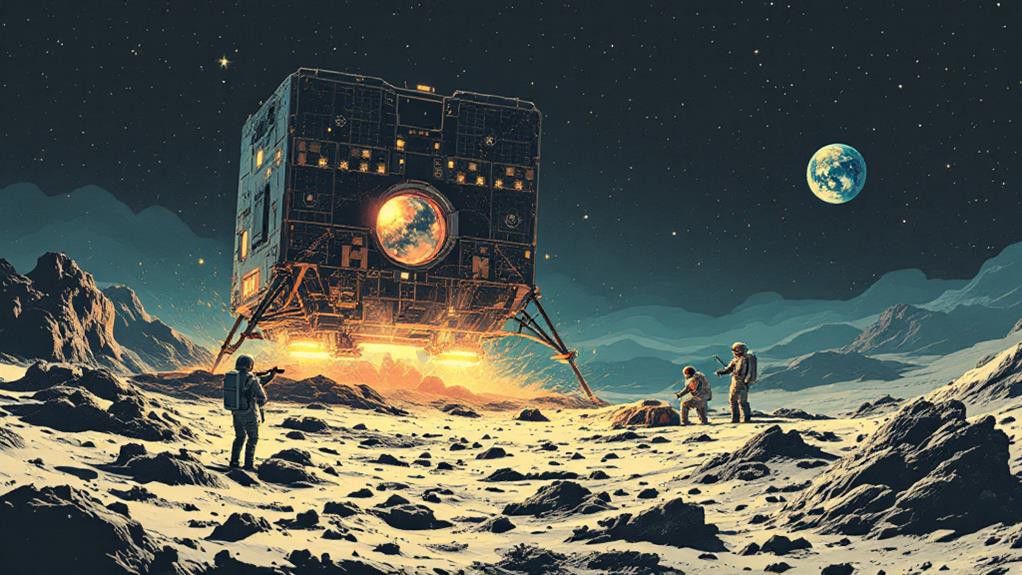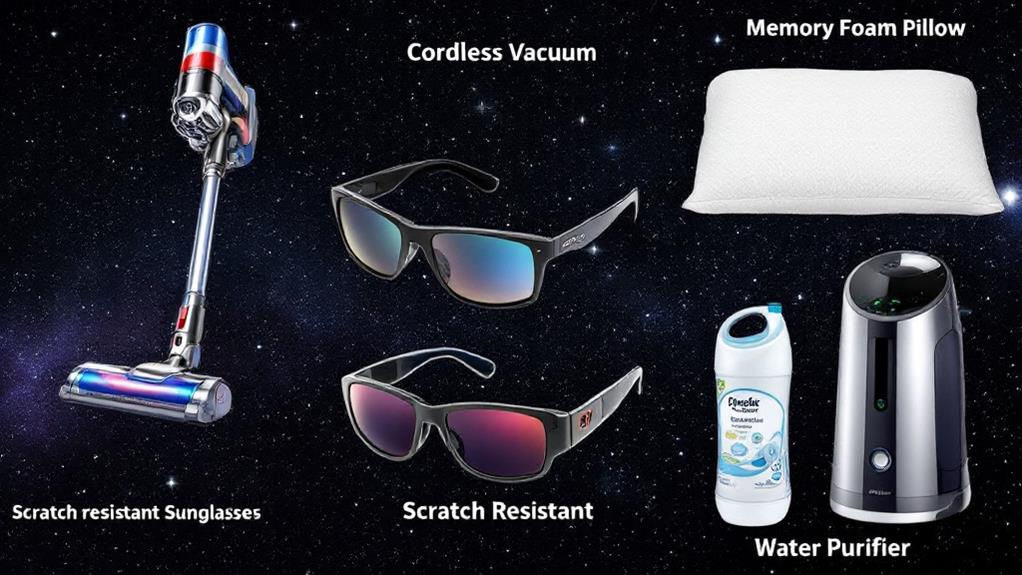Interesting Facts About Space Shuttles You Didn’t Know
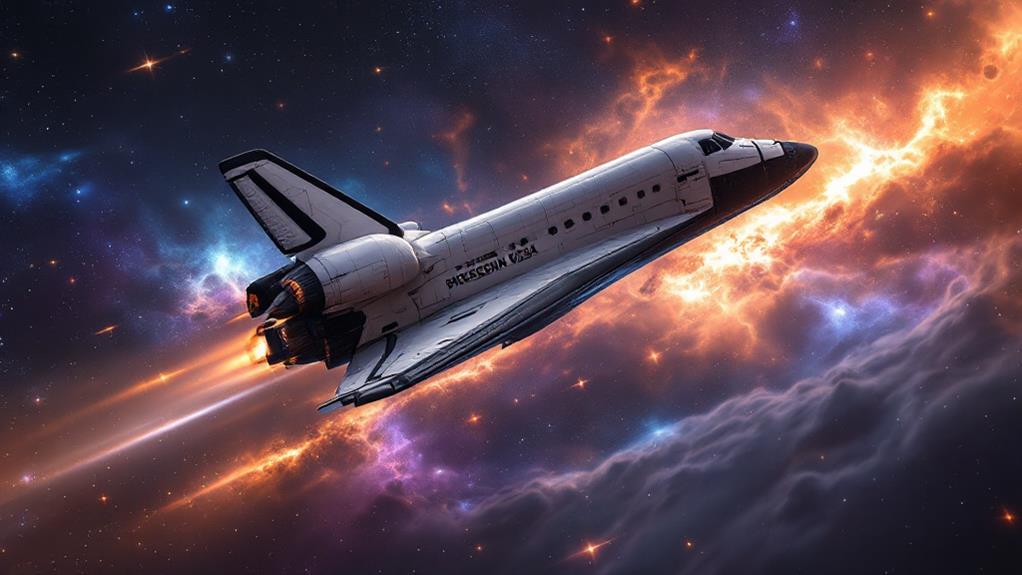
You'll be amazed by the fascinating engineering of space shuttles. They endure temperatures over 3,000°F using specialized heat-resistant tiles during re-entry. Instead of powered landings, shuttles glide like airplanes, using aerodynamic wing designs to guide them smoothly to Earth. Their reusable nature slashes mission costs and supports frequent scientific missions. With a unique design for both space and atmospheric travel, shuttles smoothly shift from orbit to runway. Inside, astronaut accommodations are ingeniously organized to provide comfort in microgravity. Uncover how these incredible machines transformed space exploration and played a crucial role in building the International Space Station and beyond.
Heat-Resistant Tile Technology
Have you ever wondered how space shuttles withstand the intense heat of re-entry into Earth's atmosphere? It's all about the heat-resistant tile technology that provides vital thermal protection to these majestic spacecraft. As a shuttle re-enters, it faces temperatures over 3,000 degrees Fahrenheit, and without proper protection, it would disintegrate. The tiles cover the shuttle's surface, absorbing and reflecting the immense heat. Each tile is carefully designed to handle extreme temperatures, ensuring the shuttle and its crew remain safe.
Now, let's talk about tile maintenance, which is a significant aspect of this technology. You might think once these tiles are in place, they're set for life, but that's not the case. After each mission, technicians inspect and repair any damaged tiles. They replace those that have sustained wear and tear, ensuring the shuttle is ready for its next expedition. This rigorous maintenance keeps the shuttle's thermal protection intact, preventing catastrophic failure during re-entry. By understanding the importance of these tiles and their upkeep, you gain insight into the incredible engineering that keeps space exploration safe and successful.
Glide Landing Capabilities
Space shuttles boast remarkable glide landing capabilities that set them apart from other spacecraft. These shuttles don't rely on engines for landing. Instead, they glide back to Earth, much like a glider, harnessing their aerodynamic features. This unique ability lets them re-enter the Earth's atmosphere and land safely without the need for powered flight or engine thrust.
When you think about it, the space shuttle's design is quite ingenious. Its aerodynamic features, including the wing shape and control surfaces, are specifically crafted to manage the descent and guarantee a controlled landing. During re-entry, the shuttle's landing trajectory is carefully calculated to make certain it can glide smoothly to the runway. This trajectory involves a series of S-turns that help manage speed and altitude, allowing the shuttle to line up perfectly for a precise landing.
You might find it fascinating how these aerodynamic marvels shift from a spacecraft to an unpowered glider. The shuttle's ability to glide and land safely on a runway, much like an airplane, demonstrates its advanced engineering. Next time you watch a shuttle landing video, notice how seamlessly it adapts from space to Earth.
Shuttle Launch Dynamics
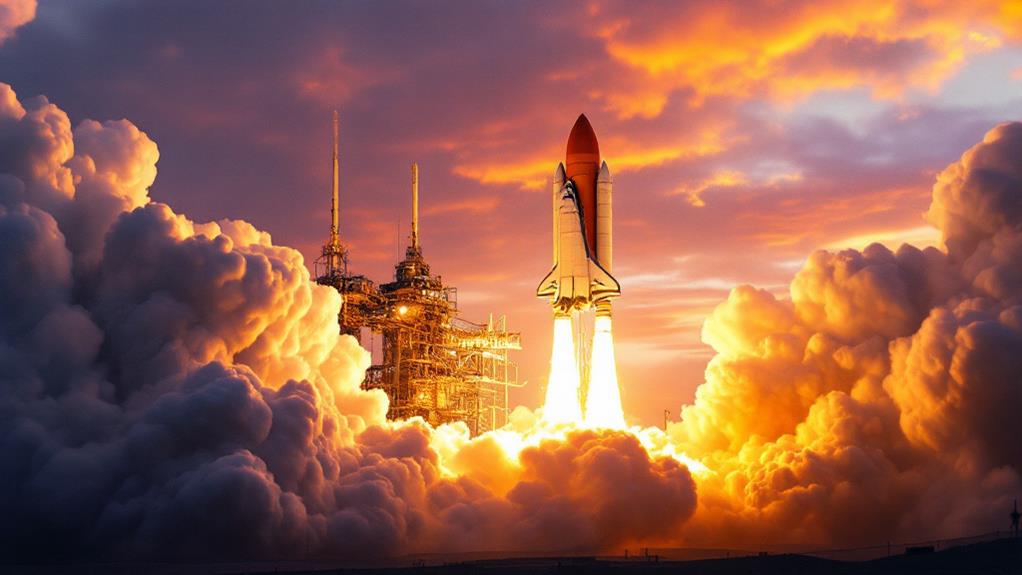
Launching a space shuttle is a carefully orchestrated process that combines powerful engineering and precise timing. As you watch a shuttle ascend, you're witnessing a marvel of launch dynamics. The shuttle's engines ignite with a roar, propelling it upward along predetermined launch trajectories. These paths are thoroughly calculated to guarantee the shuttle reaches its intended orbit safely. Engineers consider numerous factors, including the Earth's rotation, atmospheric conditions, and the shuttle's payload, all of which influence the trajectory.
Mastering orbital mechanics is vital for a successful launch. The shuttle must gain enough velocity to break free from Earth's gravitational pull and enter a stable orbit. Achieving this involves a delicate balance between speed and altitude. As the shuttle climbs, it performs a series of maneuvers, adjusting its angle and speed to align with the desired orbit. This process is known as "pitch-over."
Throughout the ascent, the shuttle's computers make real-time adjustments to maintain the correct trajectory. They must account for any changes in conditions, guaranteeing the vehicle stays on course. It's a complex dance of technology and physics, all aimed at delivering humans and cargo safely into space.
Unique Orbiter Design
The orbiter's design stands out due to its unique blend of aerodynamics and functionality. When you look at a space shuttle, you'll notice it's not just built for space but also for the expedition back to Earth. Its wings and body are carefully crafted to guarantee aerodynamic efficiency, allowing it to glide smoothly through the atmosphere during reentry. This design minimizes drag, helping the orbiter maintain control and stability at high speeds.
You might wonder how the orbiter maneuvers once it's in space. That's where the orbital maneuvering system comes into play. This system uses small engines to adjust the orbiter's position and trajectory in space. It's essential for docking with the International Space Station or repositioning for reentry. The combination of aerodynamic design and precise orbital maneuvering makes the orbiter a marvel of engineering.
The design has to balance the demands of both space travel and atmospheric flight, which isn't an easy task. Engineers carefully consider materials and shapes to guarantee the orbiter can withstand extreme temperatures and pressures. By doing so, they create an efficient vehicle capable of safely transporting astronauts to and from space.
Reusable Spacecraft Innovation
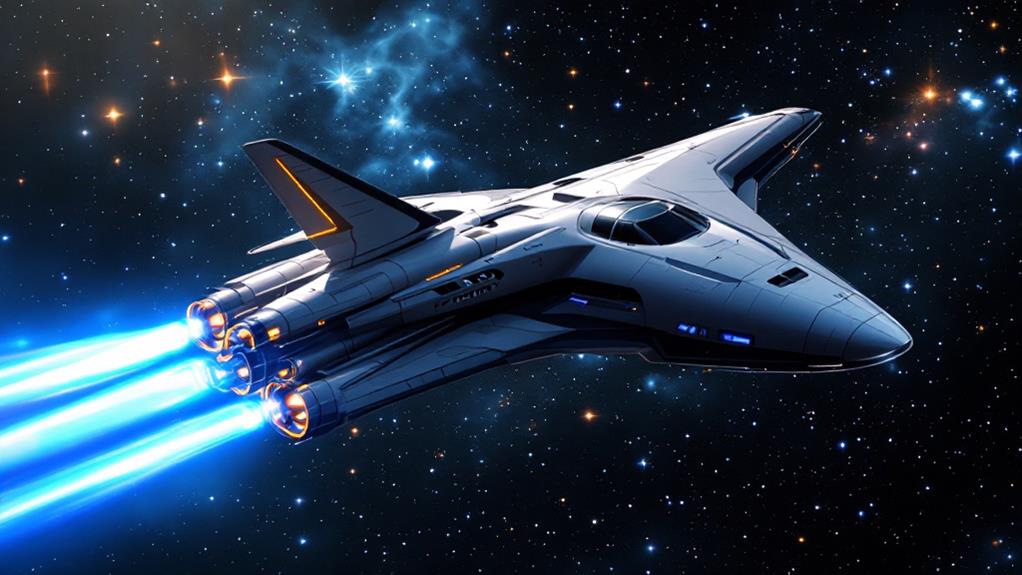
A groundbreaking aspect of space shuttle technology is its reusability, transforming how we think about space travel. Unlike traditional spacecraft that burn up or are discarded after a single use, space shuttles can be launched, returned, and relaunched. This innovation drastically cuts costs and resources, making orbital missions more sustainable and efficient. When you think about the logistics of reusing a launch vehicle, it becomes clear how revolutionary this concept is for space exploration.
Here are some key points to understand about reusable spacecraft innovation:
- Cost Efficiency: By reusing the shuttle, NASA saves millions that would otherwise be spent on building new launch vehicles for each mission.
- Increased Mission Frequency: With reusable technology, you can conduct more orbital missions in a shorter time frame, enhancing scientific research and exploration possibilities.
- Environmental Impact: Less manufacturing and waste mean a smaller environmental footprint, making space travel more eco-friendly.
- Technological Advancements: Developing reusable systems has led to breakthroughs in materials, design, and engineering, benefiting a wide range of industries.
Understanding these aspects reveals just how essential reusable spacecraft are in shaping the future of space exploration.
Astronaut Accommodations
While reusable spacecraft technology has transformed space travel, it's likewise vital to contemplate how astronauts live and work during their missions. You've got to think about the unique environment they experience while floating miles above Earth. One of the fundamental elements of space shuttle missions is the crew facilities, which provide the astronauts with a functional, albeit compact, living space. These facilities are designed to guarantee that astronauts can perform their duties effectively and stay comfortable.
In the space shuttle, sleep quarters are indispensable. They might not be as plush as your bedroom back home, but they offer a small, private area where astronauts can rest. Each crew member has a sleep station equipped with a sleeping bag secured to the wall to prevent drifting in microgravity. The quarters are equipped with ventilation systems to maintain airflow, assuring a good night's sleep.
Beyond sleeping, astronauts also rely on other crew facilities, such as a small kitchen area for preparing meals, hygiene stations for personal care, and workstations for conducting experiments. These accommodations are thoughtfully designed to support the crew's health and efficiency, guaranteeing they can focus on their mission objectives.
Shuttle Program Legacy
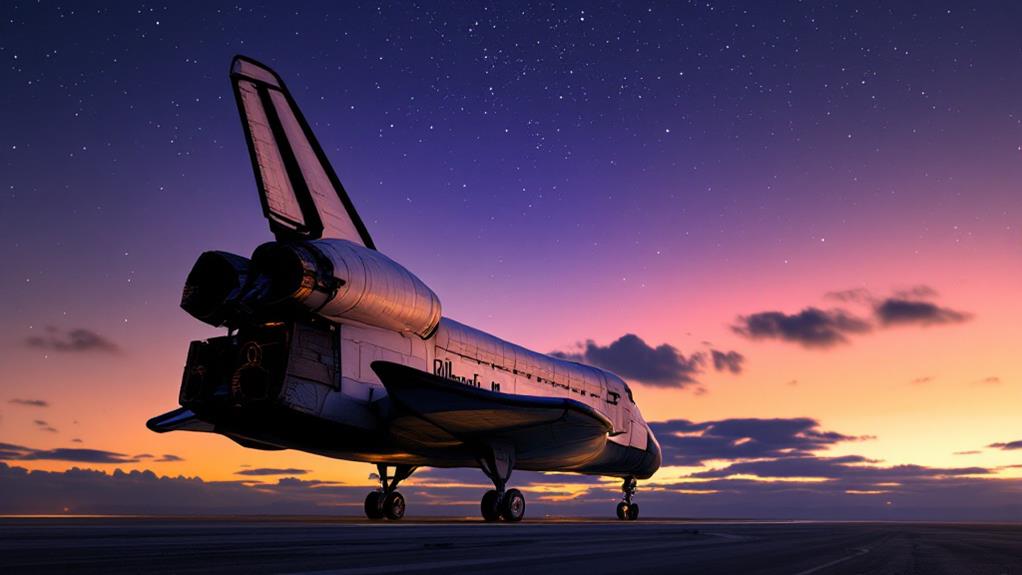
Space shuttles have left an indelible mark on the history of space exploration and technological advancement. They weren't just vehicles; they were ambassadors of human ingenuity. The shuttle program milestones are impressive, showcasing achievements in reusable spacecraft technology and expanding our understanding of space. You might find it fascinating to know how these milestones paved the way for future missions and fostered unprecedented international collaboration.
Here are some key aspects of the shuttle program's legacy:
- Reusable Spacecraft: The shuttles were the initial reusable spacecraft, transforming space travel by allowing multiple missions with the same vehicles, thereby reducing costs and increasing frequency.
- International Collaboration: The shuttles enabled partnerships with countries like Russia, Canada, and Japan, culminating in joint missions and contributions to the International Space Station (ISS).
- Satellite Deployment and Repair: Shuttles played a significant role in deploying and repairing satellites, including the Hubble Space Telescope, cementing their role in expanding our view of the universe.
- Scientific Research: Experiments conducted onboard the shuttles provided essential data, enhancing our understanding of microgravity's effects on biological and physical processes.
These elements illustrate why the shuttle program remains a cornerstone of space exploration history.

